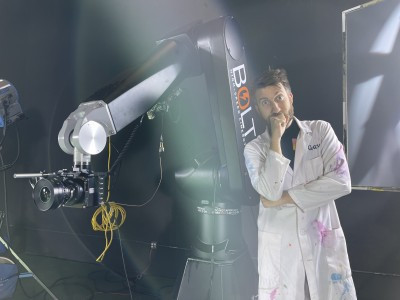Ultra-slow motion in live broadcast

Author: Bob Pank#
Published 1st September 2011
What is ultra-slow motion?
Slow motion has been around since the beginnings of cinematography and broadcasting, but ultra-slow motion for broadcast is quite a recent development. It’s only been possible since the advent of super high-speed video cameras, which were initially developed for scientific use. Slow motion can be produced with conventional broadcast cameras but these are only capable of shooting at frame rates between 75 and 180fps. The range of a true ultra-slow motion system is up to 5000fps or more.
What makes an ultra-slow motion shot different from ordinary slowmo?
When you can shoot at several hundred frames per second, or even thousands, you create shots that give a dramatically different view of the action. As a result, directors tend to use them in a different way. While conventional slowmo shot at rates up to 180fps with standard broadcast cameras is generally used to let viewers see a slower version of what they saw at normal speed, ultra-slow motion uncovers things the eye and the camera could never otherwise detect. Watch a golfer hit the ball at 100fps and you simply see the club swing a little more clearly. At 1500fps you can see the shaft of the club bend, and the ball squash and compress as the club head makes contact – and with unprecedented clarity.
Does this mean ultra-slow and ordinary slow motion might be used together on a production?
Certainly. A director covering a major sports event would certainly want to show competitors at 100fps for example, so that the audience can see what happened in a football tackle, for example. An ultra-slow motion shot at the same event would be used in a more creative way to capture shots that bring a completely new insight into the stresses of competition, and deliver a much sharper image.
What kind of equipment is required for ultra-slow motion?
Super high-speed cameras are not developed primarily for broadcast use, although the latest generation cameras do produce images that are comparable with the image quality generated by standard cameras. But these ultra-slow motion cameras lack a lot of the things necessary for use in a live broadcast setting, so they have to be adapted as part of a broadcast-integrated system. This ensures that the necessary input and output options are available, and that the system has a familiar look and feel for broadcast crews, and is easy to operate under the pressure of live production. Typically, the system will include the camera, a processing/control unit, a hard disk recorder, and control surfaces/panels. The most advanced systems can deliver live output at normal speed while continuously recording for instant ultra-slow motion replay.
What factors influence the choice of frame rate for a shot?
Directors and camera operators usually choose the frame rate that will ‘open up’ the detail they want to show, and choose the lowest rate they can, without motion blur being apparent. The speed of the action is an important factor: a 100 metre sprinter does not move as fast as a baseball on its way to the boundary, so there’s no need to shoot the runner at 5800fps. But at 1200fps you can see extraordinary deformations of the bat and ball, and for race cars even higher frame rates can deliver stunning shots.
What about 3D? Can ultra-slow motion be shot in 3D?
Yes, and it is. The first ultra-slow motion 3D was seen at the 2010 ESPN Home Run Derby baseball event, and it produced breathtakingly dramatic footage. 3D ultra-slow motion shots have since become established as an important new feature of premier sports coverage in the US.
Who is using ultra-slow motion today?
The take up of ultra-slow motion is accelerating exponentially as broadcasters compete to deliver the most compelling coverage. From its use at the Olympic Games in 2008, ultra-slow motion is rapidly entering the mainstream of broadcasting as a near-essential tool for broadcasters like TV Globo in Brazil, and facilities providers like Fletcher Sports in the USA and Multi-Production in Poland.
What are my options if I want to get into ultra-slow motion for my production?
There are providers who operate an ultra-slow motion service, using their own specialist crews, which can be hired for an event. But most broadcasters or facilities considering ultra-slow motion as a serious enhancement of their capabilities prefer to install a fully-integrated system that their own crews can operate. This makes it much easier to retain control and make ultra-slow motion an integral part of the coverage. I-MOVIX ultra-slow motion systems are available for a range of broadcast applications: see www.i-movix.com for more information.




















